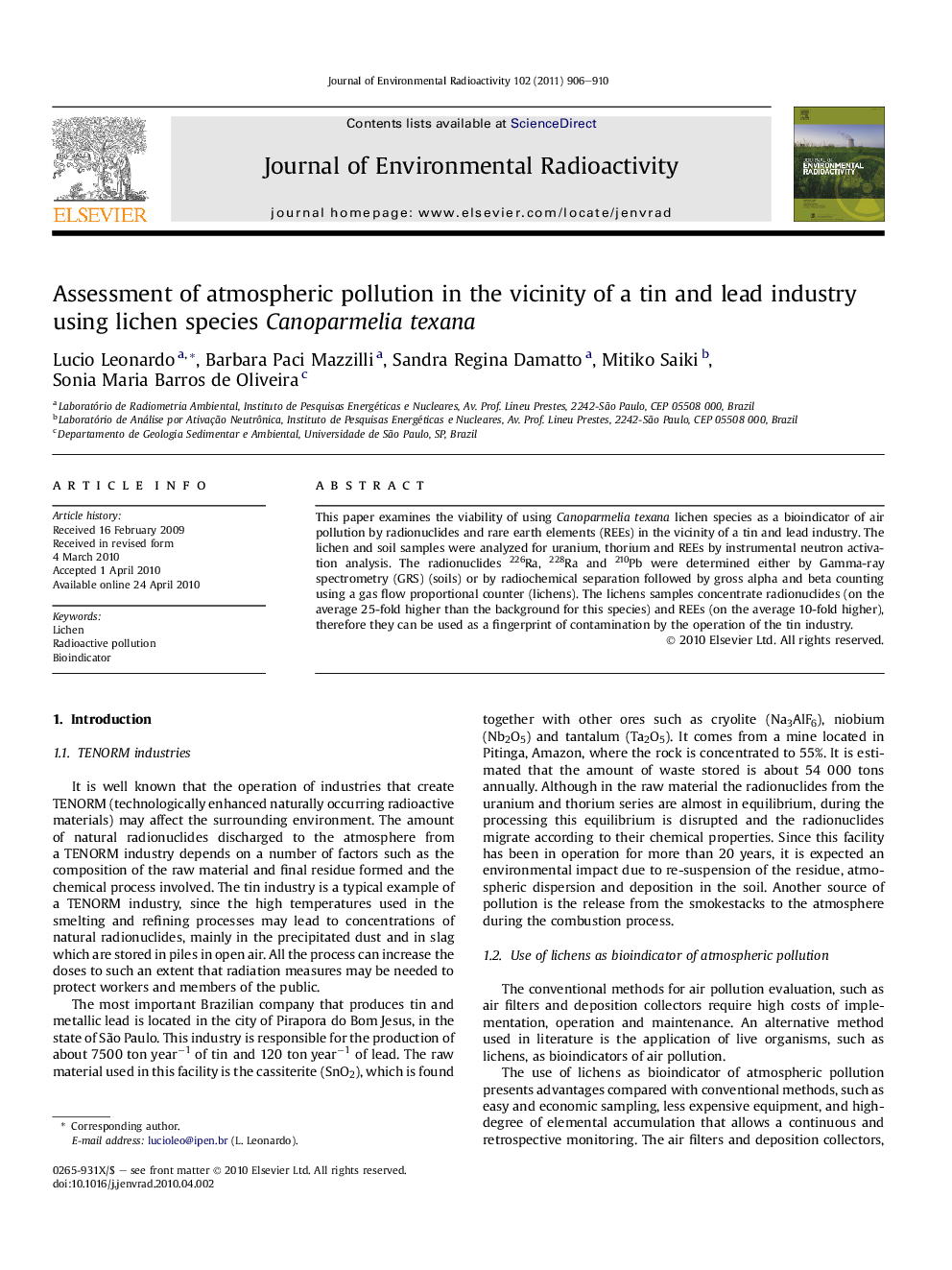| Article ID | Journal | Published Year | Pages | File Type |
|---|---|---|---|---|
| 1738438 | Journal of Environmental Radioactivity | 2011 | 5 Pages |
This paper examines the viability of using Canoparmelia texana lichen species as a bioindicator of air pollution by radionuclides and rare earth elements (REEs) in the vicinity of a tin and lead industry. The lichen and soil samples were analyzed for uranium, thorium and REEs by instrumental neutron activation analysis. The radionuclides 226Ra, 228Ra and 210Pb were determined either by Gamma-ray spectrometry (GRS) (soils) or by radiochemical separation followed by gross alpha and beta counting using a gas flow proportional counter (lichens). The lichens samples concentrate radionuclides (on the average 25-fold higher than the background for this species) and REEs (on the average 10-fold higher), therefore they can be used as a fingerprint of contamination by the operation of the tin industry.
